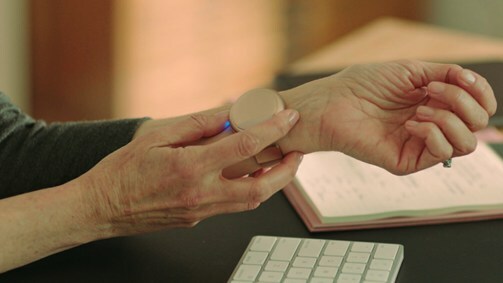
A collaboration between Embr Labs, a Boston-based healthtech startup and the University of Massachusetts Amherst aims to address one of the most prevalent symptoms of menopause—hot flashes. The partnership has produced new capabilities for Embr Labs’ wearable device, Embr Wave, designed to predict and mitigate the onset of menopausal hot flashes.
Enhancing Embr Wave’s Features
Embr Labs initially created the Embr Wave wearable to utilize temperature sensations as a form of haptic therapy. In this updated version, developed in conjunction with researchers from UMass Amherst’s Institute for Applied Life Sciences (IALS), the device can predict a hot flash before it happens. It then activates immediate cooling to help mitigate or completely alleviate the symptom.
The feature was developed using machine learning algorithms trained on a large dataset of digital biomarkers for hot flashes. Matt Smith, Co-founder and CTO of Embr Labs, said, “Hot flashes occur in 75% of women and can persist for up to a decade. We are proud to be developing effective tools for menopause, which has lacked new solutions for too long. By delivering automatic cooling for hot flash relief, we aim to provide a reliable method for managing this symptom.”
Beyond Symptom Tracking: Real-time Intervention
Unlike many existing wearables that focus solely on symptom tracking, this technology offers real-time interventions. Mike Busa, Director of UMass Amherst’s IALS Center for Human Health and Performance, describes the feature as a “reactive digital drug” for hot flash symptoms. Busa stated, “This concept of automatic intervention based on real-time physiological symptoms is relatively unexplored. Instead, the technology identifies early physiological changes that precede a hot flash and provides an immediate, tailored response aimed at minimizing the disturbance of hot flash symptoms.”
According to Busa, “The device is communicating the data to servers and back to the device in a fraction of a second, combining data and cloud computing with Embr Labs’ thermal technology.”
The current Embr Wave device is worn on the inside of the wrist and can be activated to either warm or cool the wearer manually. The next version aims to commercialize the predictive technology. Embr Labs was recently awarded a patent for the use of biomarkers to activate cooling for hot flashes and has filed another patent related to the predictive algorithms. In addition, the company secured a $35M financing round to support market expansion and further product development.



